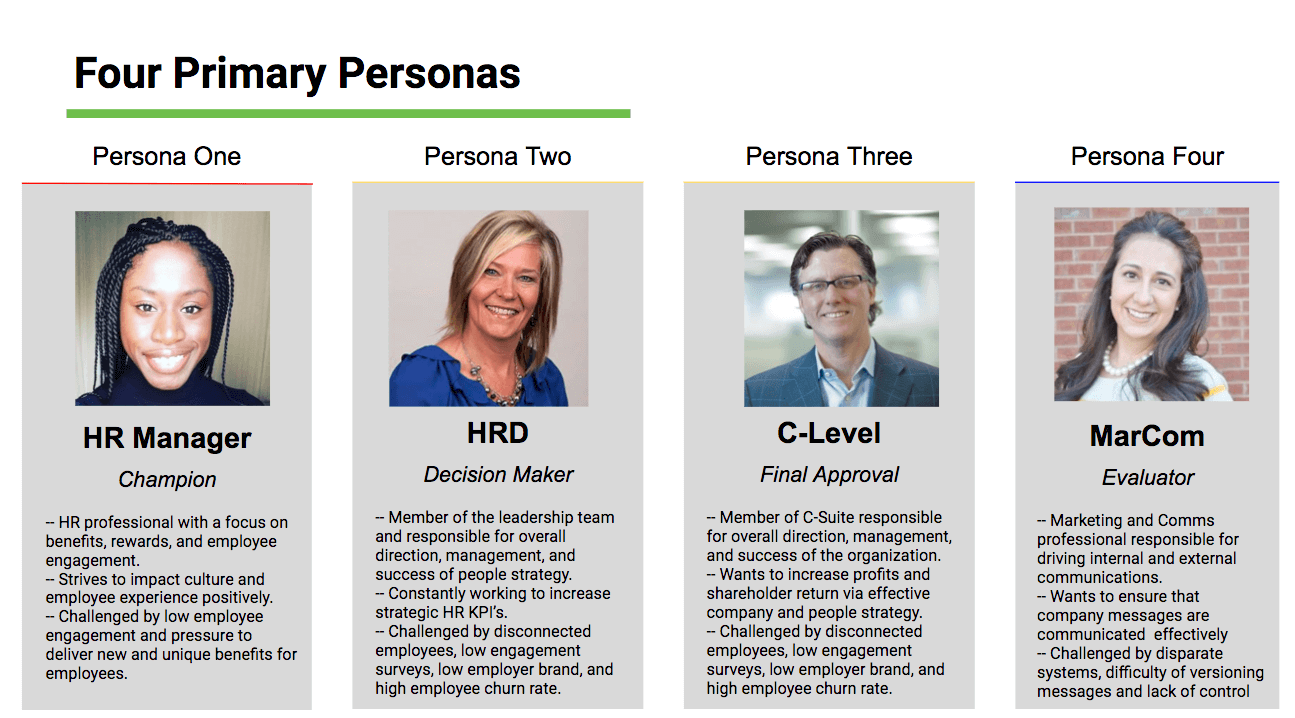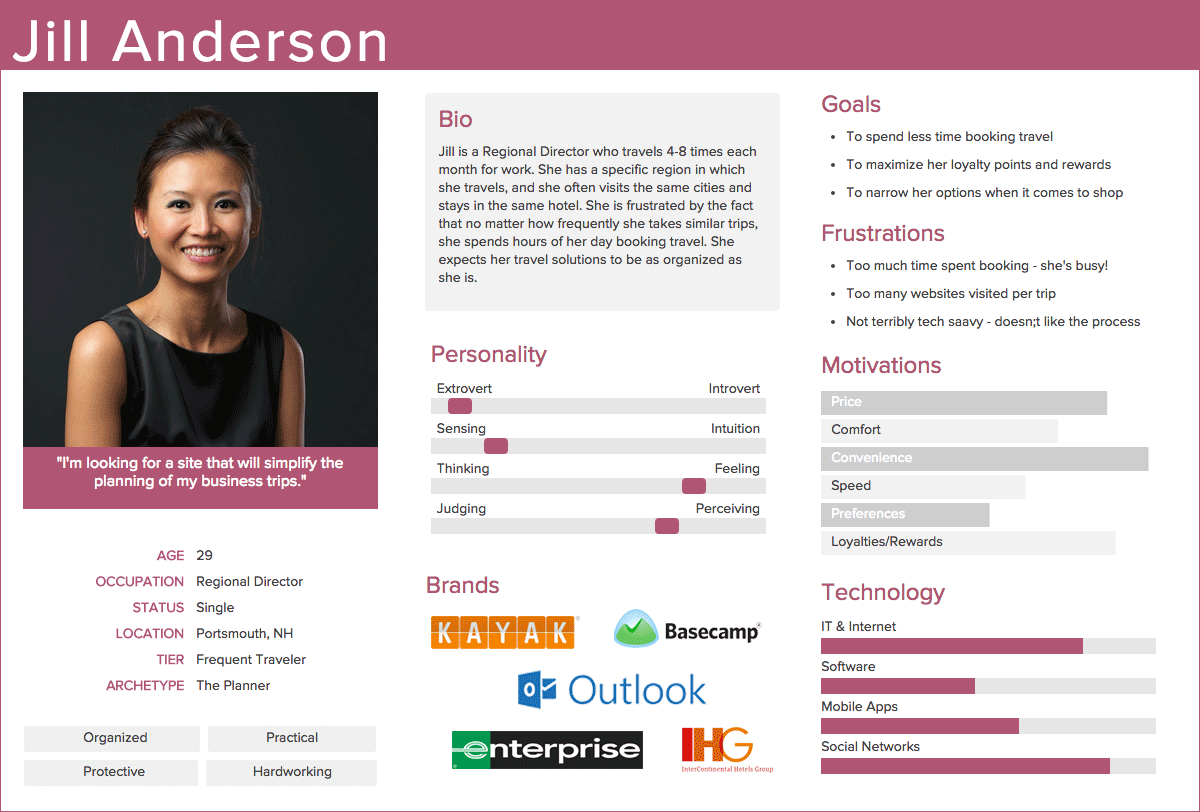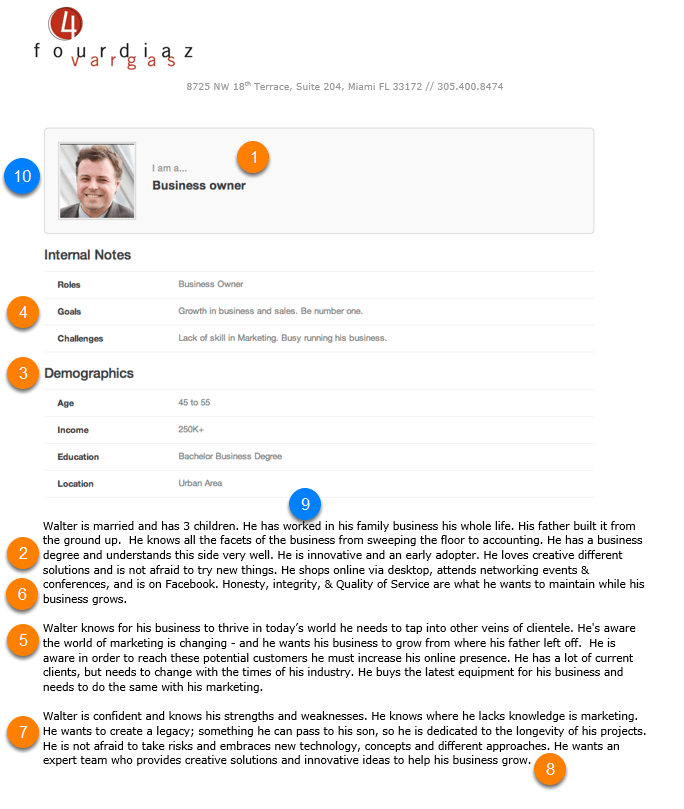Amid the sea of information floating around the internet, the key to being relevant lies in making quality content. However, even though this may be true, your content will only have the impact it potentially has if it reaches and actually connects with your readers.
But how can you do this when there’s so much competition?
One way is to envision the type of readers and customers you want to reach through the use of customer personas. Keep reading to find out what customer personas are, how they can help you, and how you can make your own.
What is a Customer Persona?
Customer personas (also known as buyer personas or marketing personas) are the profiles of fictional people that represent your ideal customers.
When producing content, being able to create for specific people with different backgrounds and interests makes it easier to envision what they’re looking for and then meet those needs.
From writing blogs to email funnels to sales copies, basically anything you make to reach out to your customers, these personas can help you produce content that will connect.
The Basic Framework of a Customer Persona
Creating a customer persona is more than just coming up with a name and a gender. Here are details you should include in your customer persona:
1) Name of the Persona
Coming up with a name not only makes it easier for you and your colleagues to identify the persona, but also makes it easier to imagine it as a real customer. In short, it humanizes your profile.
2) Job Title
The job title of your persona helps contextualize the type of work experience or knowledge they have, and can give you insight on what type of field they’d need information on.
For example, the owner of a startup business may benefit more from content covering topics on how to market to new customers, while a manager in a company might do more research on retaining customers.
3) Demographics
How old are they and where do they live? What’s their level of education? Do they have family?
These details also provide a glimpse into what type of content your customers would be interested in, as well as terms they’d be most familiar with.
For instance, a pensioner may read more on health-related topics and have a more difficult time understanding internet slang and tech jargon, while younger readers would be more receptive to a more modern approach (e.g. memes).
4) Goals and Challenges
Having an idea of what goals your personas have or challenges they face can help you present your content in a way that helps them reach these goals or take on these challenges.
For instance, students today are concerned about using their education to keep them competitive as work candidates. On the other hand, young professionals prefer to learn how to grow their careers in their chosen fields.
5) Values and Fears
Similar with goals and challenges, values and fears will give you an idea of what motivates your customer, and how to frame your information in a way that caters to what they find important.
One example is how many people are shifting their lifestyles to be more sustainable and eco-friendly, because they care more about the environment.
6) Personality
Finally, giving your customer persona a personality gives them life and nuance. Are they the type to enjoy reading casual blog posts or would they appreciate facts laid out as simply as possible?
How To Create Detailed Customer Personas
After reading the previous section, you may think that creating a customer persona is all about coming up with fictional people. However, creating a detailed customer persona that’s relevant to your business involves a significant amount of research.
Here are six steps on researching accurate information:
1) Customer Data
First off, find out who your current customers are. What are their demographics? What are they interested in?
If you’re a large business, chances are, your customer service or your sales teams have information that you can use. If not, you can gather this information through surveys or interviews, or set up site analytics to help you passively collect these details over time.
For startups, doing research on your customer base can be difficult because you may only have a limited amount of customers. In this scenario, you have to be more direct in your research by gathering information via interviews and surveys sent to your current user base.
Examples of popular online survey tools that are free to use are Google Forms and SurveyMonkey. If you see yourself using surveys extensively in the future, SurveyMonkey has paid plans that include extra features such as additional file export options and data analysis.
2) Competitor Data
Now that you know who your customers are, the next step is to find out who your competitors are.
While you can’t send out a survey to get information on your competitors, you can do a lot of sleuthing on your own. How easy is it to access their website on mobile? Is it easy to use and navigate? Which social platforms are they active on and how strong is their presence? What topics do they often talk about?
You can answer these questions through enough internet browsing, but there are many other ways you can get the information you need. Find the gaps that you can fill or improve on what your competitors offer, so that you’ll always come out on top.
3) Market Research
When you have an idea of who your customers are and who your competition is, you can start researching ways to best retain your current customers and reach out to new ones.
In fact, creating customer personas fall under market research. Another facet of market research is creating advertising and promotional plans in line with your brand identity and customer base. You can read more on creating a marketing plan here.
4) Social Media Research
Staying on top of current social media trends will always help in creating quality content that’s relevant. You can even identify the types of questions or problems your customers are having.
Using social media tools (e.g. Google Analytics, Synthesio, Socialbakers, or Brandwatch), checking out trending hashtags, and even watching the news can help you stay current and up to date.
5) How Your Customers Spend Their Time
When you know what’s trending online and on social media, the next thing you can do is find out where your customers spend their time, whether it be online or in real life.
Again, you can use surveys to get a broad idea of where your customers hang out, or you can try personally reaching out to your best customers through email. Other ways would be to see what types of events they join or organizations/groups they’re a part of. This can give you further insight on the things your customers find important and relevant to their lives.
Samples of Successful Buyer Personas
Here are some samples of good, detailed customer personas:
1) New Breed Marketing

Source: https://www.newbreedmarketing.com/blog/creating-accurate-buyer-personas-024
This example from New Breed Marketing shows how you can focus your customer personas on certain point people involved in the sales process, as well as those directly responsible for business decisions.
Creating these personas and then catering to them specifically can help you and your teams work with potential B2B clients that you’ll be interacting with regularly.
2) Xtensio

Source: http://www.keepitusable.com/blog/?p=3428
While the previous customer profile featured four personas involved in key business decisions, Xtensio’s example concentrates on creating a detailed profile of a single persona.
By emphasizing her lifestyle, personality, and frustrations, as well as the brands she often uses, you can predict what type of problems customers like Jill encounter. You can also tell which methods or services they use to try and solve them.
3) Hubspot

Source: https://academy.hubspot.com/examples/buyer-persona-fourdiaz-vargas
This customer persona from Hubspot is just as detailed as the previous example, but concentrates on work-related motivations and values.
Based on this customer persona, you can tell that customers like Bill are always thinking toward the future and how they can improve their business. As a result, he’d likely be interested in new and emerging technologies as well as the latest business trends.
Start Creating Your Customer Persona
Now that you have a benchmark to follow for creating useful customer personas, it’s time to actually make your own. There are many templates and apps available online that can make this easy for you and your employees.
Customer personas are a great tool for creating content that’s specific for the audience that you want to reach. Now that you have an idea of what customer personas are and how to make your own, you can start catering to your audience more deliberately and effectively.
Just do your research and follow this guide, and you’ll be on the path to creating better content that’s relevant to your readers and drive them to action. Let us know how it goes for you in the comments.